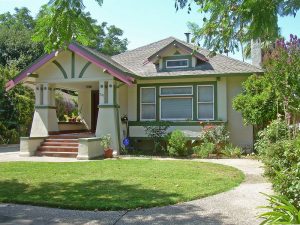The California Bungalow
The California bungalow was invented in the early 1890s in Southern California and became popular by the early 20th century as middle-class Americans began moving from apartments in the city to single-family homes. Some famous examples include the colour-filled Californian bungalow in Roseville, California, and the five dock Californian bungalow in Sydney, Australia.

San Jose, California. Photo by David Sawyer.
The California bungalow is often located on reasonably-sized land, leaving room for a spacious backyard. Designed for casual living, the Californian bungalow tends to have an open layout. The exterior is generally built with red-coloured bricks, and, sometimes, using weatherboard or timber. It can also feature roughcast and rendered finishes.

San Jose, California. Photo by David Sawyer.
Although San Francisco architect Page Brown was the designer of the Californian bungalow style, other notable names include the Greene brothers, Charles Sumner Greene, and Henry Mather Greene, who designed The Gamble House in Australia. Another incredible example is Alexander Stewart Jolly’s Belvedere in the Sydney suburb of Cremorne.

This California Bungalow is located on Wheatley Road, McKinnon, Melbourne. Photo by Alpha.
The Californian bungalow developed with its regional adaptations as it swept across Australia: the red brick in Melbourne, the liver-coloured brick in Sydney, and the limestone in South Australia. The project by Make Architecture has taken Australia by storm, with the St Kilda Californian bungalow called the Local House in the suburb of Melbourne.





